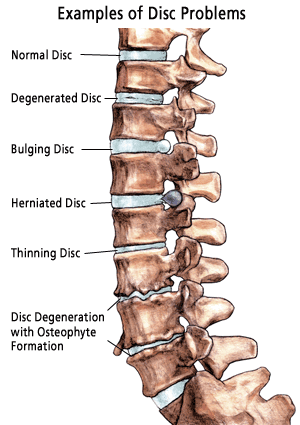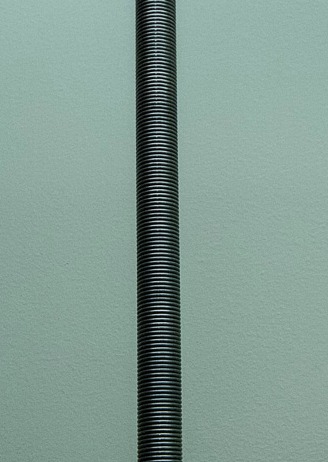This article focuses solely on sciatic pain due to herniated and bulging disc(s).
Many different stressors create sciatic pain.
No matter what the cause, sciatic pain is a symptom of compression on the sciatic nerve.
Listed below are some of the most common symptoms of sciatic pain.
- Constant pain on only one side of the buttock or leg (rarely can occur in both legs)
- Pain that originates in the low back or buttock and continues down the back of the thigh and into the lower leg and foot
- Burning or tingling down the leg (vs. a dull ache)
- Some experience a “pins-and-needles” sensation, numbness or weakness, or a prickling sensation down the leg
- Pain that feels better when patients lie down or are walking, but worsens when standing or sitting
- A sharp pain that may make it difficult to stand up or to walk
Hochschuler, Stephen H., M.D., “Sciatica Symptoms,” spine-health.com, http://spine-health.com/conditions/sciatica/sciatica-symptoms (last visited July 14, 2013).
Sciatica Symptoms for Each Nerve Root
There are two nerve roots that exit the lumbar spine (L4 and L5) and three that exit the sacral segment (S1, S2, and S3).
All five nerves bundle together to form the sciatic nerve and then branch out again in the leg to deliver motor and sensory function to specific destinations in the leg and foot.
Since more than one nerve root can be compressed, every individual may experience different combinations of the above-mentioned symptoms.”
Hochschuler, Stephen H., M.D., “Sciatica Symptoms,” spine-health.com, http://spine-health.com/conditions/sciatica/sciatica-symptoms (last visited July 14, 2013).
The appropriate method for decompressing the nerve is not a one-size-fits-all answer. The symptoms may overlap and mirror one another (even when the cause is not from a herniated or bulging disc).
However, as the area of compression varies, each person may require a different method for decompressing the nerve.
PLEASE! go to the doctor and find out what is causing your sciatic pain before you start to address the issue.
Address the Symptom and the Symptom will Persist!
Generally when we stretch tight muscles, we find relief from our aches and pains. However, the sciatic nerve needs to be decompressed to find the same relief.
People almost always tell me about their sciatic pain and then say, "I just need to stretch it out!"
Oddly enough, the stretch pictured above feels really good and "seemingly" relieves sciatic pain for the moment.
Why then does sciatic pain return so quickly, often times radiating down the leg worse than before?!
While forward flexion stretches the sciatic nerve, it also causes the bulging disc to further compress the already irritated nerve.
The additional stretch of the hamstrings further impinges the nerve, causing even more pain. If you have hyper-extended knees, be careful, as stretching the back of the leg is even more dangerous due to the increased range of motion in the knee joint.
YOU CANNOT STRETCH YOUR WAY OUT OF SCIATIC PAIN
WITH FORWARD FLEXION AND HANSTRING STRETCHES.
PLEASE RESIST!!!
Address the cause
Combining Pilates exercises to decompress the spine with stretches for the hips and buttocks is an effective way to relieve the sciatic nerve.
I recommend these seven stretches, which increase flexibility in the hips, low back, and buttocks, reducing the risk of tight muscles that may further aggravate the sciatic nerve.
Length = Decompression
A long-term program that promotes lasting recovery is necessary to prevent nagging sciatic pain from returning.





